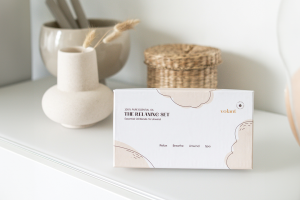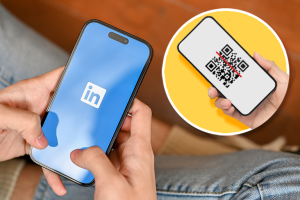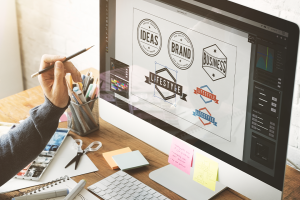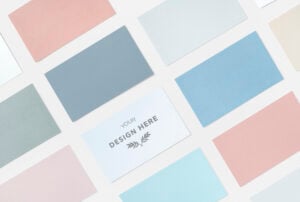Cornerstone, cor-ner-stone, noun. The first stone set in the construction of a masonry foundation. A stone from which all other stones will be set in reference to this stone, thus determining the position of the entire structure.
In the marketing world, a logo should be treated as a cornerstone. With a well-designed company logo, you can go on to build up the rest of your company. Many business owners start with a logo and from there work on the rest of their strategic marketing such as a slogan, online or offline advertising campaigns, and website. A logo is a powerful tool which, when designed perfectly, can influence purchasing decisions, improve brand recognition, and boost reputation. A logo shouldn’t just be designed to make your company stand out against competitors; it should make a statement about your products, services, and company beliefs.
Unless you are Paul Rand, designing a logo that works best for your business doesn’t just happen automatically. There are a lot of behind-the-scenes details that a logo designer must take into consideration, such as font, color, size, shape, and underlying message. Our online logo design company is here to help provide some needed insight to those who want to know how to create a logo for their business.
8 Logo Design Aspects To Consider
- Keep Things Simple.
It can be extremely easy to make a logo that quickly becomes overwhelming on the eyes. Don’t get pulled into the idea that you need to include an element of every product or service your business provides. Our logo design company recommends choosing simple shapes, such as an oval, circle, square, diamond or rectangle within which you can include a simple image. Including multiple images, half a dozen colors, and introducing a variety of shapes and words can impede your business’ ability to connect with customers. A simple logo design ensures your audience knows exactly what you offer. - Appropriate Color Choice.
The use of color and it affects on an audience is complex. Different subconscious moods and psychological thought processes are linked to a particular color, so choose wisely. Color influences one’s perception of a brand, so make sure you do your research on what the effects are of choosing a black logo over a green logo, etc. For example, the color red is associated with energy, strength, power, and danger — which may not be an excellent choice for those who want to open up a garden center, bank, or yoga studio. Steer clear from bright colors as these may not look good against certain colored backgrounds. Also try to envision your new logo’s color on a promotional product such as a t-shirt or mug. - Font Matters.
If you are set on including a word or short phrase on your logo, then make sure that the font is legible. When you enlist the help of a free logo design tool, you can choose from hundreds of different fonts to create the desired look for your logo. We recommend a print font, such as Helvetica, Times New Roman, Gotham, Futura, or any of these other popular fonts. As far as text is concerned, many business owners opt for a simple 3-4 word slogan or a “Founded In”, “Since”, or “Established” phrase. These phrases can be used later in both online and offline marketing campaigns and often help nurture trust and brand loyalty. - Less Is More.
Have you noticed the minimalist trend that has caught on in all aspects of society? It’s no surprise that a minimalist logo design trend has also been on the rise over the past decade. Next time you are out shopping or commuting to work, take note of the number of logos that have a simple design or single color. Big name brands such as Apple, Target, and Nike each have mastered the art of keeping their brand recognizable while simplifying the appearance of their logo. Remember the days when Apple’s logo consisted of every color of the rainbow? Just be sure to keep in mind that your business’ message and intent isn’t lost when trying to design a minimalist logo. - Spacial Awareness.
It’s all about balance when it comes to logo design. Keeping your logo as symmetrical as possible not only makes it easy to use across promotional materials and online marketing platforms but also keeps the logo simple. Of course, not all logos will be perfectly symmetrical, but every well-designed company logo has spacial awareness put into consideration. Take a look at the logos of Cisco, Adidas, Air BnB, Intel, and other influential businesses with inventive logos. What shapes are they using? Where is the text in relation to the rest of the logo? Be sure to keep the most essential aspect of your logo front and center to draw the eye inwards. - Make It Legible.
Go easy on the effects when designing your new logo. Using Adobe Illustrator, Freehand, Photoshop and other design tools are useful for professional logo designers. However, if you have never designed a logo before, it can be easy to add too many enhanced effects to your logo to the point where it’s illegible. Ditch the filters and the effects and revert back to keeping things simple. Clean lines, darker colors, and larger font can make a world of a difference for your business. The goal is to ensure customers recognize your brand immediately, and legibility is how you can make that happen. - Keep It Timeless.
There’s a reason some movies make it on IMDb’s Top 100 Movies Of All Time list while others drop off the map after a few years: they each have an aspect of timelessness (subject matter, plot, famous actor or director, etc.). Design a logo that is as timeless as The Godfather by choosing fonts that won’t be out of style in three years, or a slogan whose reference will be lost on the next generation. The idea is to create a logo that will require as little editing as possible in the future. Luckily you can now experiment with different logo designs using logo design software to determine whether or not it will withstand the test of time. - Make It Versatile.
A well-designed logo should look perfect just about anywhere. Keep in mind that you may want to add your logo to promotional products in the future, such as mugs, t-shirts, and business cards, not just on your storefront window. Keeping your logo clutter free and legible will help ensure that it looks good on any surface, as well as on social media channels, websites, e-mails, and other online marketing materials. When designing your new logo, ask yourself whether or not a customer would want to wear this on a t-shirt.
Don’t forget that you can always tweak your logo down the road — nothing is set in stone! Just keep in mind that your logo is your business’ cornerstone, so once you’ve established a loyal customer base it may be difficult to introduce a whole new logo concept and business idea. It is best to choose a logo design that can be minutely adjusted in the future without drawing too much negative attention to your brand.
Now that you’re armed with some professional logo design advise, it’s time to head to the drawing board. Create your first logo in as little as 10 minutes or work with a professional designer.







